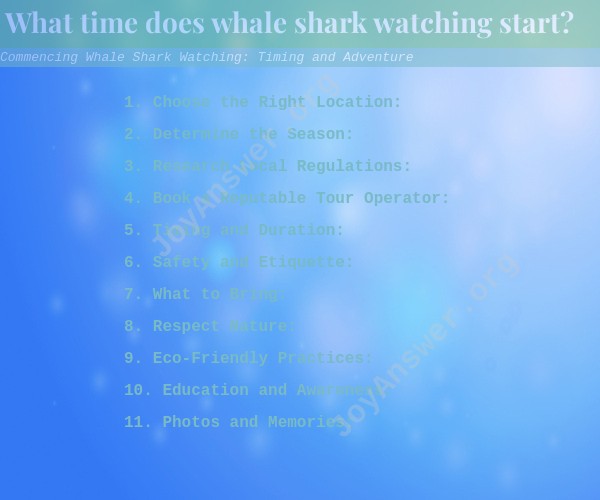What time does whale shark watching start?
Whale shark watching can be an incredible adventure, allowing you to witness these majestic creatures in their natural habitat. The timing and logistics of whale shark watching can vary depending on the location and local regulations. Here's a guide to help you commence your whale shark watching adventure:
1. Choose the Right Location:
- Research and choose a destination known for whale shark sightings. Popular locations include places like Oslob in the Philippines, Ningaloo Reef in Australia, Isla Holbox in Mexico, and more.
2. Determine the Season:
- Whale shark sightings are often seasonal. Research the best time to visit the chosen destination for the highest chances of encountering whale sharks.
3. Research Local Regulations:
- Learn about the local regulations and guidelines for whale shark watching. Many places have specific rules to ensure the safety of the animals and minimize their disturbance.
4. Book a Reputable Tour Operator:
- Choose a reputable tour operator that follows ethical and responsible practices for wildlife encounters. Look for operators that prioritize the well-being of the animals and provide educational experiences.
5. Timing and Duration:
- Tours usually take place in the early morning when whale sharks are more active near the surface. Be prepared to start your adventure early.
- Whale shark encounters may last for a limited time, typically around 30 minutes to an hour, depending on the location and the tour operator's policies.
6. Safety and Etiquette:
- Follow the instructions of your tour guide for safety and etiquette guidelines. Maintain a safe distance from the whale sharks to avoid causing stress to the animals.
7. What to Bring:
- Bring essentials such as sunscreen, a hat, sunglasses, a swimsuit, a towel, and a waterproof camera to capture the experience.
8. Respect Nature:
- While the experience is exciting, remember to respect the natural environment and the animals. Do not touch, chase, or disrupt the whale sharks in any way.
9. Eco-Friendly Practices:
- Choose eco-friendly sunscreen to protect both yourself and the marine ecosystem.
- Avoid using single-use plastics and follow responsible waste disposal practices.
10. Education and Awareness:
- Take the opportunity to learn about whale sharks, their behavior, and their importance in the marine ecosystem. This enriches your experience and contributes to conservation efforts.
11. Photos and Memories:
- Capture the beauty of the moment through photos, but prioritize enjoying the experience without getting too focused on your camera.
12. Conservation Contribution:
- Some tour operators contribute to conservation efforts through a portion of their proceeds. Supporting these operators can have a positive impact on marine conservation.
Remember that whale shark watching is a privilege and should be conducted with utmost respect for the animals and their environment. By choosing ethical operators, following guidelines, and practicing responsible tourism, you can have a memorable and meaningful whale shark watching adventure while contributing to the conservation of these magnificent creatures.













